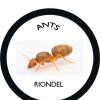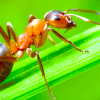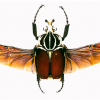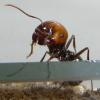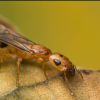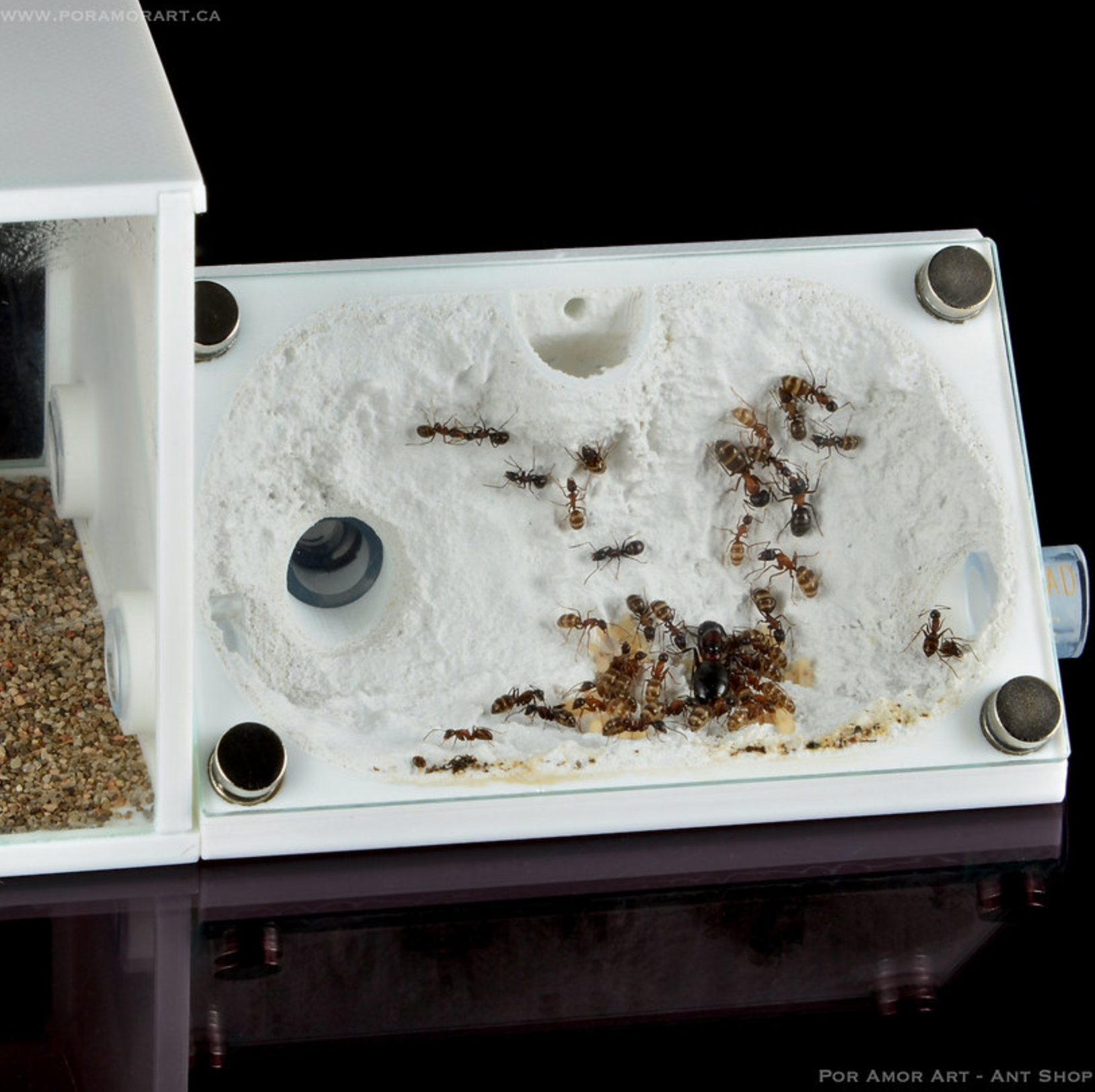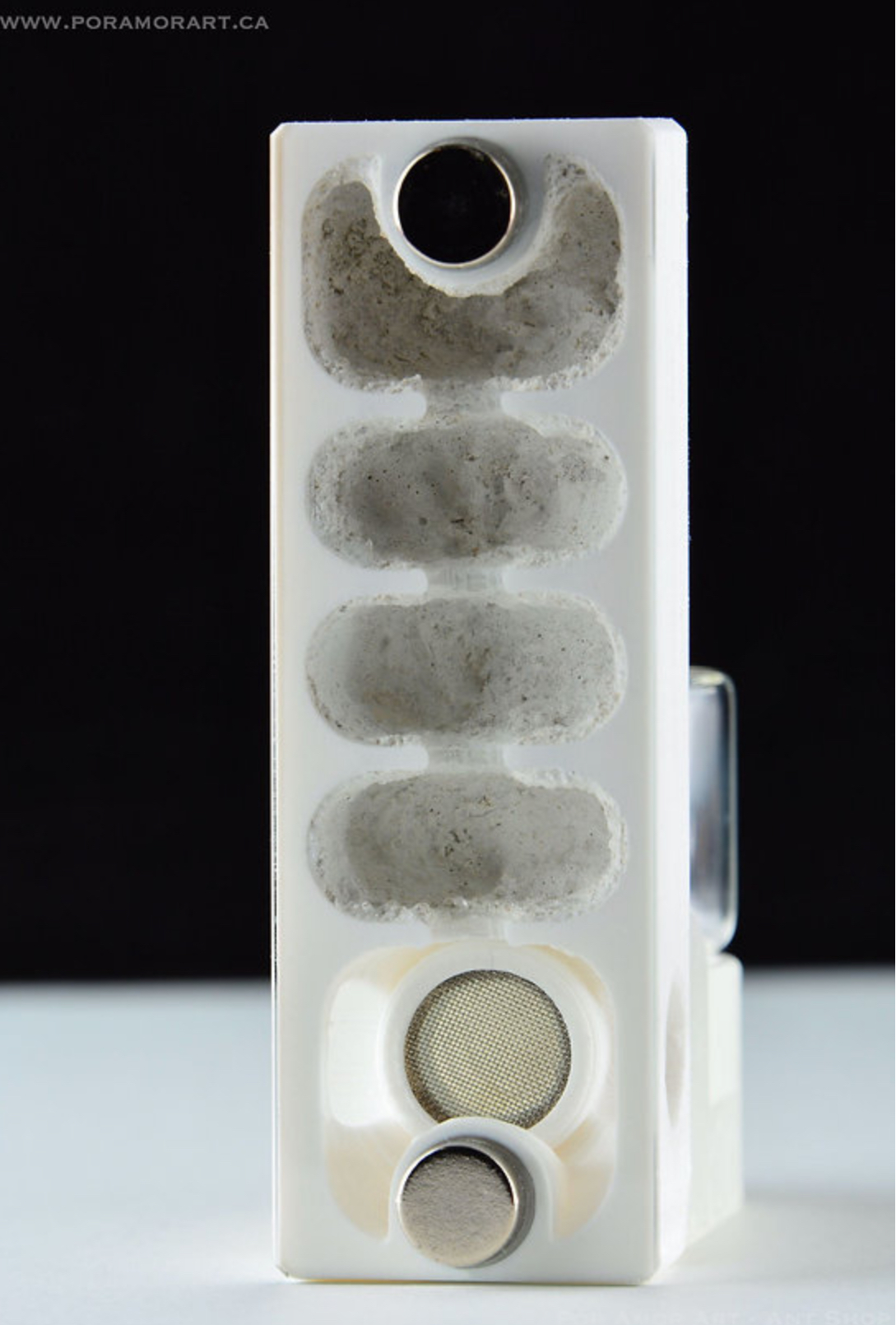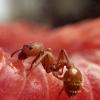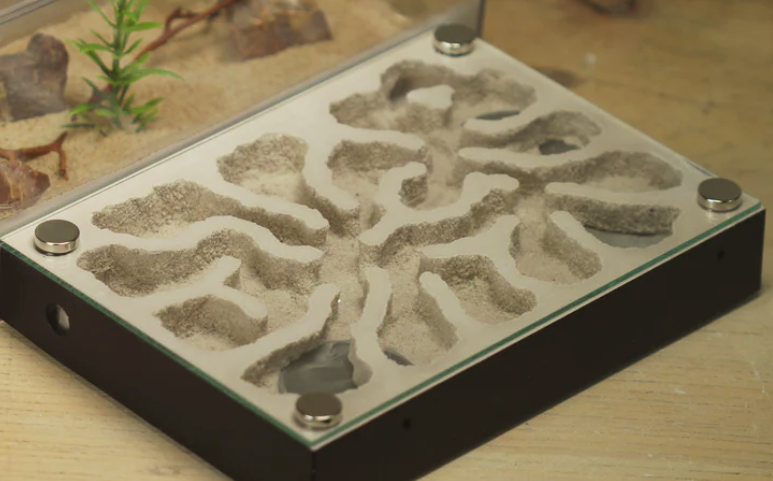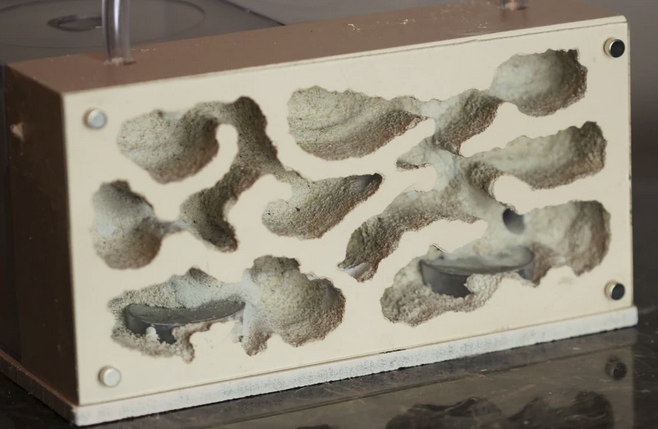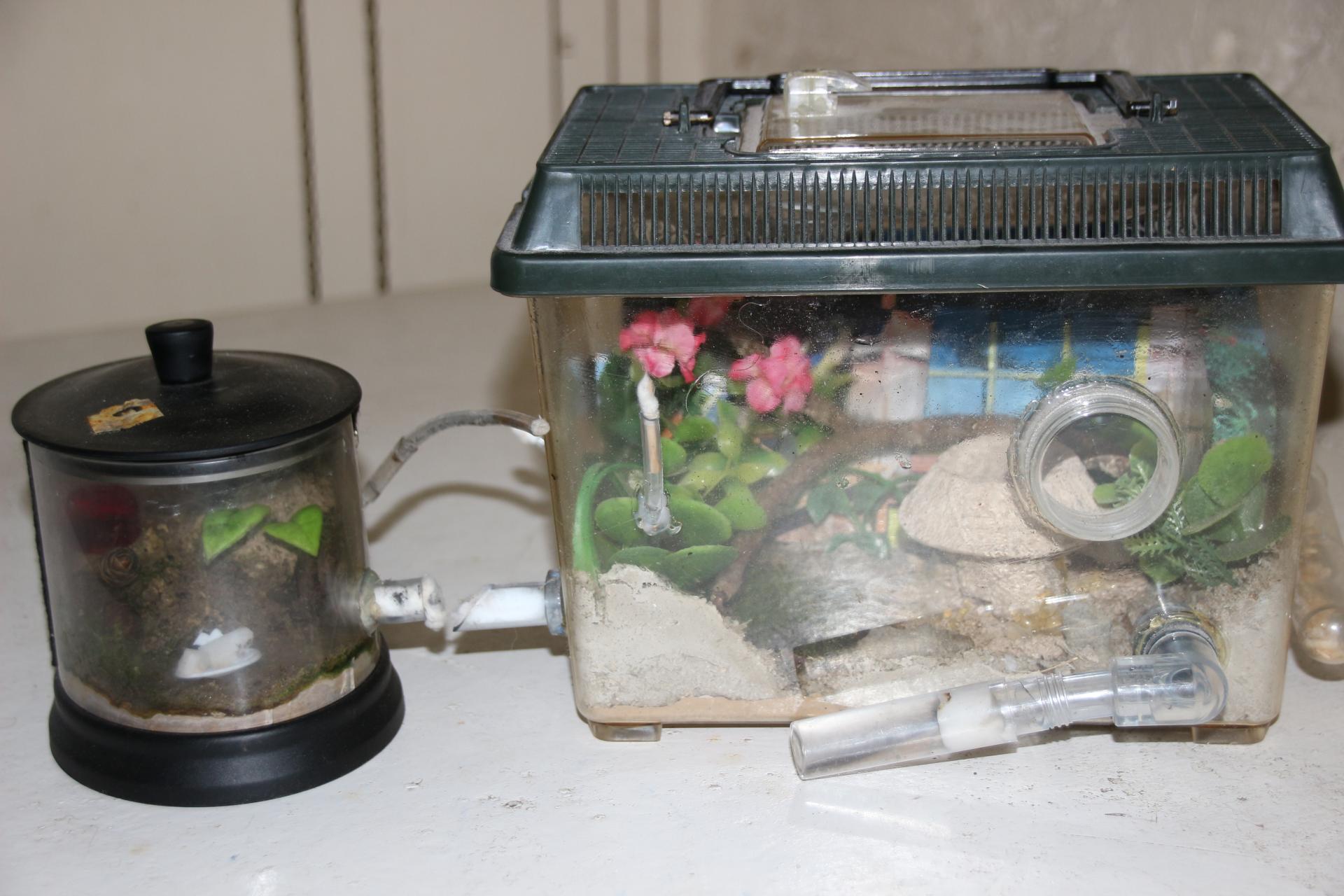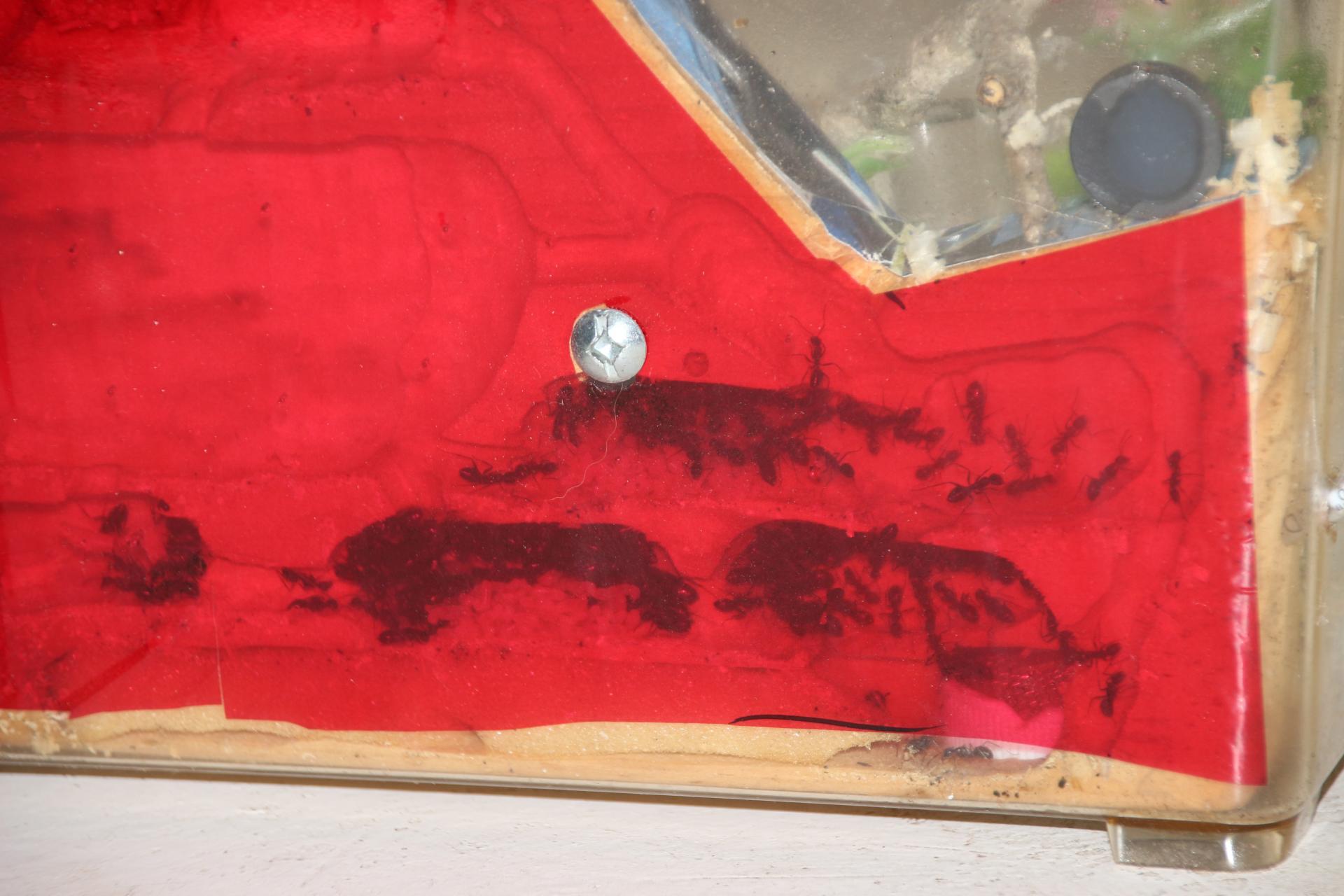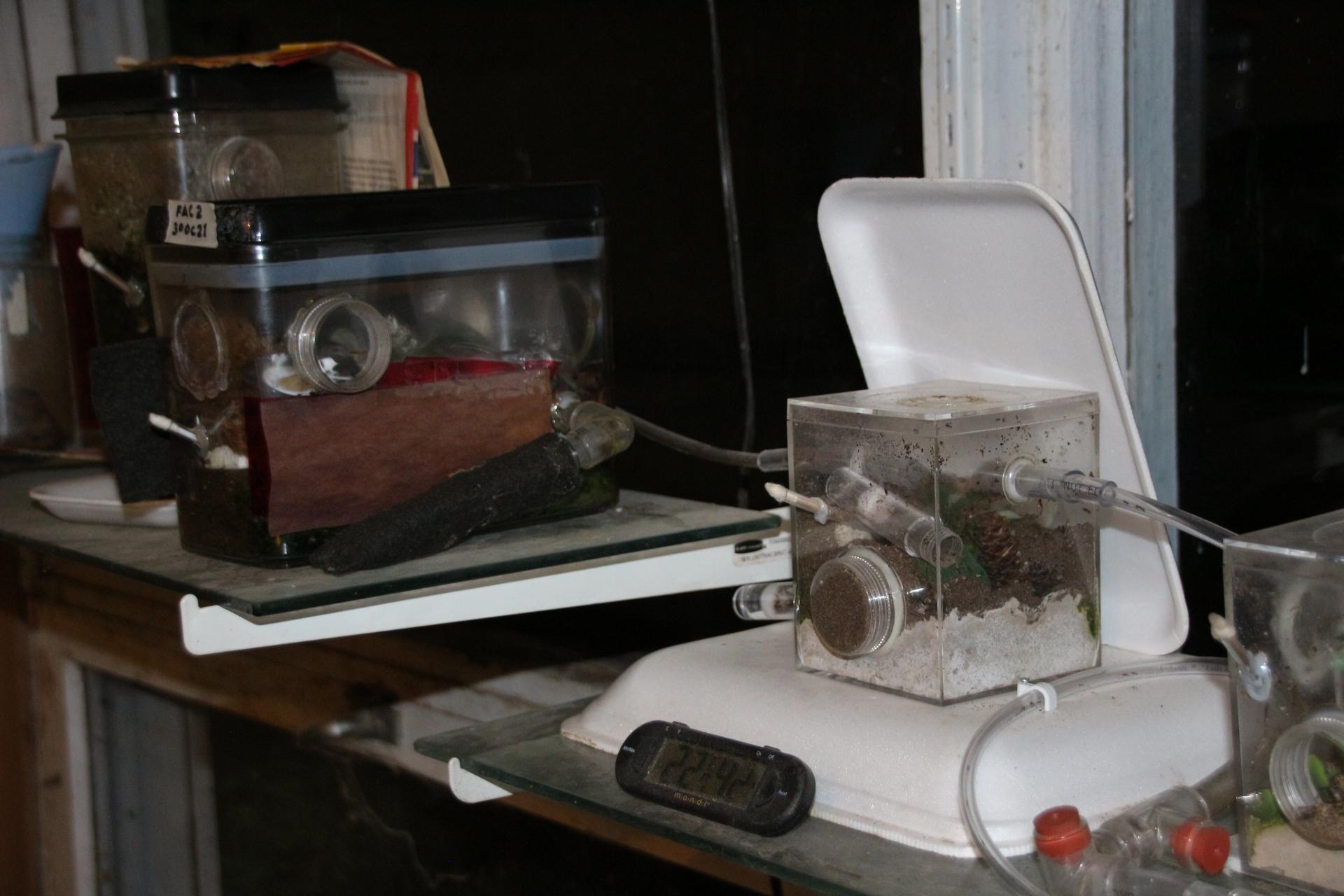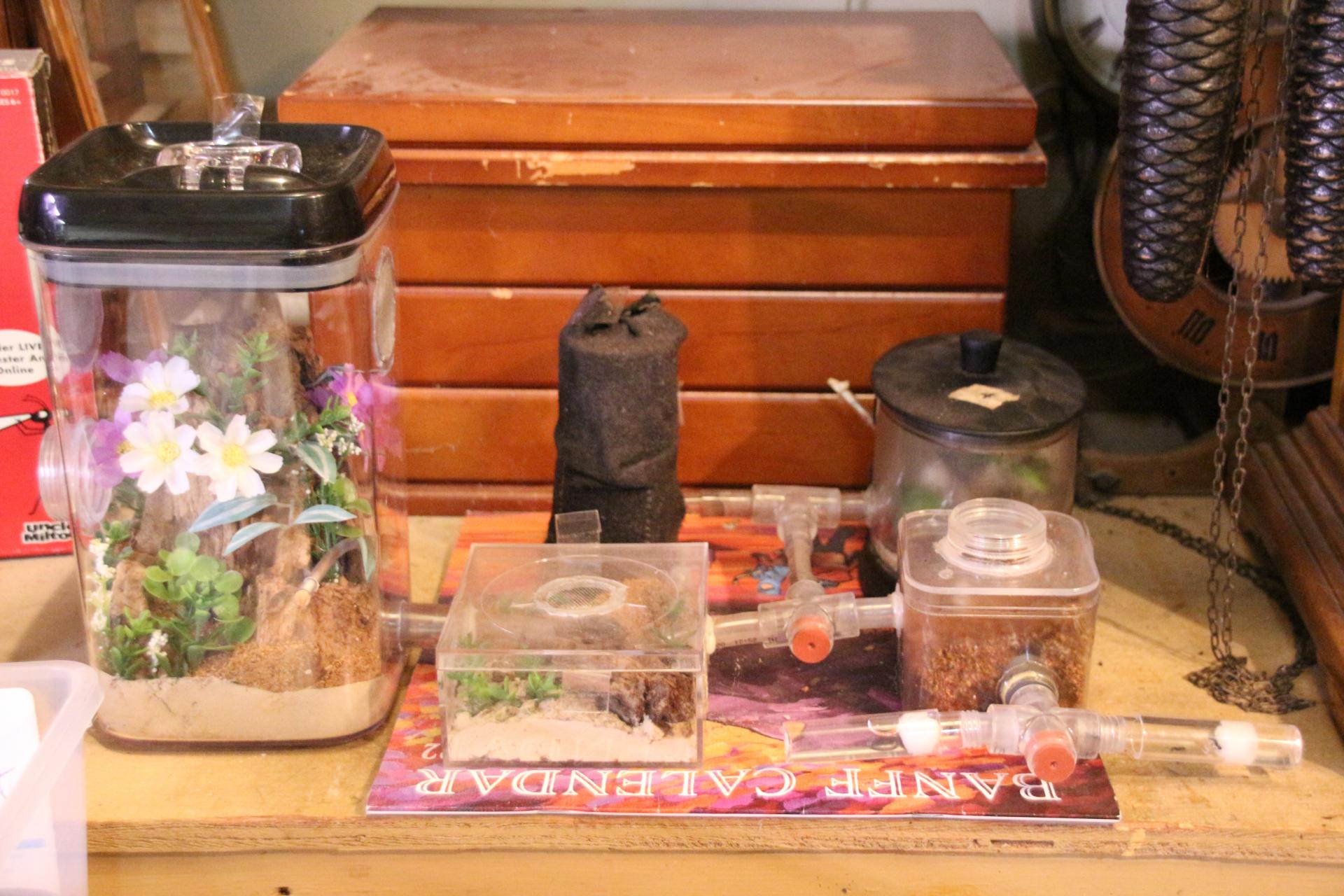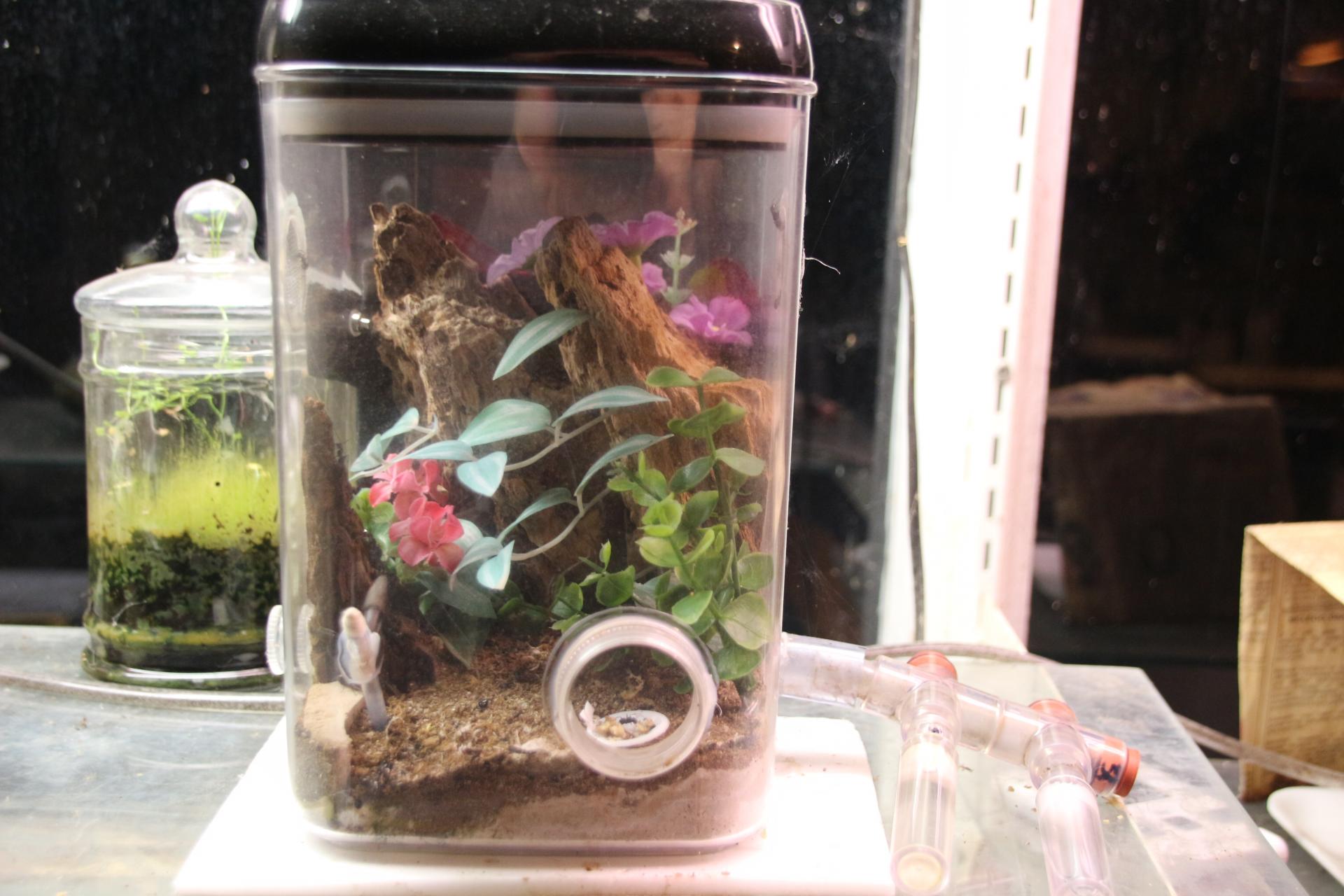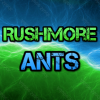Mine would be a sort of modified test tube, sort of like a cross between Por Amor's test tubes and Apartment formicarium. Essentially it would be a rectangular test tube. The rectangular shape would both completely rolling, even better than test tube stands or other current solutions to that problem. It would also mitigate the issue of glare when photographing, as the glass on the top side would be flat, not round.
The top of this nest would be a flat piece of glass for viewing. It would be attached with magnets like THA or screws like Buckeye Myrmecology, easily removable for cleaning.
The right side would also be glass for increased visibility from more angles.
The bottom would be plastic/acrylic with grout/substrate/THA-style floor layered above it to optimize the ants' textural experience.
The left side would be like the bottom except vertical, allowing the ants to hang from that surface.
All sides will have a length of 6 inches and a width of 1 inch (~ 15 cm by 2.5 cm). Looking at the nest head on like peering into the entrance of a test tube, it would appear to be a square, with each side being 1 inch long. This means the nest itself would have the dimensions of 6" X 1" X 1" (~15 cm X 2.5 cm X 2.5 cm).
The back of the nest would have a water chamber similar to Por Amor's test tubes except without the gravel. All sides of the water chamber would be clear to enable easy monitoring of the water levels. It would be connected to the nest via a precision-cut rectangular PVA sponge, designed to tightly fill in the rectangular shape to prevent leakage. Furthermore, the plastic where the sponge is located will be slightly indented on all sides to keep the sponge in place.
The nest area would be divided into four chambers, all of which are in sequence beside each other with Chamber 1 bordering the water chamber and Chamber 4 on the other side of the nest. The walls separating the chambers should be coated in grout/substrate/THA-style flooring as the bottom and left sides of the nest are, to provide even more surface area for the ants to rest on. at the very bottom of each wall there would be a semicircular opening through which the ants can navigate between chambers.
All walls would be 1 inch by 1 inch (~2.5 cm by 2.5 cm). The semicircular openings would have a diameter of 1/4 inch (~2/3 cm). It would not be intended for large species such as most Camponotus, yet these openings could accommodate most ants smaller than that.
The front of the nest would be square, 1 inch by 1 inch (~2.5 cm by 2.5 cm). It would have a circular opening with a tubing mate protruding outward to fit 3/8-inch tubing. In appearance the front of the nest would appear like a square AntsCanada test tube adapter, yet it would be permanently attached to the nest, as the nest can be cleaned by removing the top panel. The inside of the front panel would be coated in grout/substrate/THA-style flooring like the bottom, left side, and chamber walls.
Overall, this nest would take all of the advantages of Por Amor's innovative test tubes and combines them with the advantages of a flat formicarium. This setup would provide much more surface area than Por Amor's test tubes (or any test tube, for that matter) while still providing the same advantages a test tube insert does.


